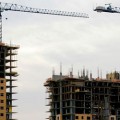WASHINGTON – The US second quarter economy, grew faster than expected, showing its fastest pace in over two years, however the momentum will probably slow in the third quarter as Hurricanes Harvey and Irma temporarily curbed activity.
US economy upswing with jobless claims rise
Gross domestic product increased at a 3.1 percent annual rate in the April-June period, the Commerce Department said in its third estimate on Thursday. The upward revision from the 3.0 percent rate of growth reported last month reflected a slightly faster pace of inventory investment.
Growth last quarter was the quickest since the first quarter of 2015 and followed a 1.2 percent pace in the January-March period. Economists had expected that the second-quarter GDP growth rate would be unrevised at 3.0 percent.
Harvey, which struck Texas, has been blamed for much of the decline in retail sales, industrial production, homebuilding and home sales in August. Further weakness is anticipated in September after Irma slammed into Florida early this month.
Rebuilding is, however, expected to boost GDP growth in the fourth quarter and in early 2018. Estimates for the growth rate in the July-September period are just above 2.2 percent.
However, they could be raised after another report from the Commerce Department on Thursday showed a decline in the goods trade deficit in August as well as large increases in both retail and wholesale inventories.
Harvey and Irma continue to impact the labor market and are expected to cut into job growth this month. In a third report, the Labor Department said initial claims for state unemployment benefits increased 12,000 to a seasonally adjusted 272,000 for the week ended Sept. 23.
Still, the labor market remains strong. Claims have now been below the 300,000 threshold, which is associated with a robust labor market, for 134 straight weeks. That is the longest such stretch since 1970, when the labor market was smaller.
Prices for U.S. Treasuries held losses after the data and the dollar .DXY fell to a session low against a basket of currencies. U.S. stock index futures were trading lower.











